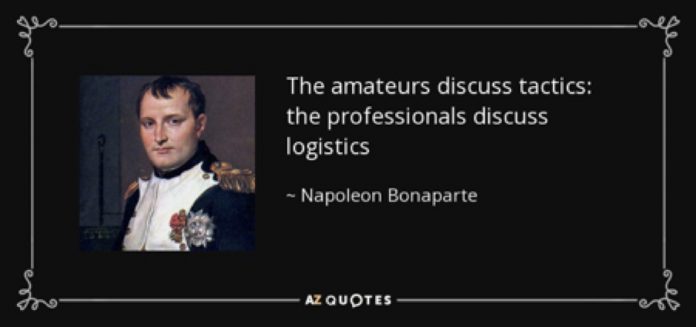Napoleon was talking about the tactics of warfare. However, the same can be said about amateur politicians putting the tactics of political expediency — getting re-elected — above the logistics for solving the problem put forward by professional advisors.
Nowhere is this more the case than ill-considered attempts by government and councils to find viable, affordable solutions to urban transport.
The population of New Zealand will exceed six million people by 2045, less than 30 years away. It is likely that more than 70% will live in or near the centre of our major cities, with most choosing Auckland.
In global terms, our urban public transport systems are still in the dark ages. If we are to see any solutions that meet practical and environmental standards, we need to take a quantum leap, not the bare minimum solutions our political masters favour.
Political expediency on steroids
Check out the Auckland Harbour Bridge that was originally built with only four lanes. Yes, four lanes! That’s not planning for the future, that’s political expediency on steroids.
All our major cities have similar examples. Wellingtonians access their airport through a two-lane tunnel! And the country’s capital airport can’t accommodate modern jet aircraft.
And what happens after an urban disaster like the Christchurch earthquakes? The politicos spend the next eight years doing as little as possible.
Still no stadium, still no conference centre, still no rebuilt Cathedral Square, let alone any thoughts about how to get people from A to B in the rebuilt centre, if and when it is ever finished.
I wrote a blog in 2000 about the planned Britomart underground rail terminal, noting that if a hole in the ground at the bottom of Queen Street was the answer to Auckland’s transport problems then local politicians were asking the wrong questions.
The Inner City Rail Link is an example of politics leading common sense. Likely to cost something north of $5 billion, it may change Britomart from a terminus to a through station, but the tiny residential population it serves will not solve current transport issues.
Again, it’s an isolated, politically-driven decision, rather than part of an overall solution.
Changing patterns
Futurists proposed that more than half of the workforce would by now be working from home. Never happened, never will.
Technology might improve our ability to connect electronically but future generations will travel to work for a few decades yet.
The views of futurist architects such as Le Corbusier regarding vertical cities containing home, work and shopping also seem unlikely in New Zealand any time soon.
But nobody thought people would discover the appeal of living closer to their city centre. Not that this has reduced the need for urban transport, because most still work some distance away.
What this change has done is seriously skew residential values, while inadvertently encouraging the construction of often cheap and nasty apartments. This social change has exacerbated transport issues and where to park an increasing number of cars.
Light Rail is the rallying cry by any politician when asked about solutions for urban transport. The success of Light Rail is seen in small-to-medium sized cities around the world.
However, it is no magic bullet. Compared with buses, it is costly to set up the rail system, street stations, the electrification system and the rolling stock.
A light rail system would also take space out of existing streets — and many New Zealand city streets are relatively narrow, unlike London, Paris, or even Sydney. Nevertheless, Light Rail is, or at least should be, part of future inner-city transport.
But not to airports. Heavily laden airline travellers and short-trip commuters don’t mix. For example, airports such as Auckland would be better served, as Sydney and Brisbane are, by extending existing heavy rail via Manukau.
Simple future-scoping options
Any urban transport solution for New Zealand needs to include improving road use. A few ideas:
• Ban the importation of cheap, crappy second-hand cars and vans.
• Introduce a national policy requiring all commercial road transport, including taxis, delivery vans, utes, trucks on city roads, and buses to be 100% electric powered by 2038.
• Offer serious tax incentives for all electric-powered vehicles.
• Fewer parking options. Imagine how our roads would free up if the only parking allowed was off road, in car parks.
• Ban — and this one is personal — all those useless, overpriced SUVs. Unless they are electric-powered.
• Repeal the law allowing/requiring competitive tenders for urban transport services. Attempting to make urban transport profitable just leads to inadequate services.
There is the potential for exciting new ways to travel and interact in the future — maybe not flying cars, but widespread electrification and even driverless vehicles.
However, such extreme possibilies are unlikely to reduce current transport problems.
Cars will, without serious disincentives, remain a core way of getting from A to B in our cities. To compete, public transport needs to be cheap, reliable and convenient, with car travel made more expensive and inconvenient.
Light rail, yes, but modern, electified buses can and should play a part. The trick is to make public transport better, cheaper, more regular and reliable, and heavily subsidised.
Finally, provide real busways and tramways through our cities, not just off/on lanes. And ensure that buses and light rail have priority at all intersections. That is, cars stop and public transport vehicles go.
It’s not rocket science, it’s common sense.




